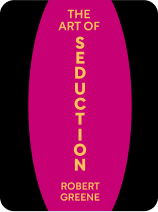

This article is an excerpt from the Shortform book guide to "The Art of Seduction" by Robert Greene. Shortform has the world's best summaries and analyses of books you should be reading.
Like this article? Sign up for a free trial here.
How do you seduce someone? Is there a universal seduction technique that works on everyone?
According to Robert Greene, the author of The Art of Seduction, the first step to seducing someone is to lure your “victim” or target by creating an air of intrigue about you. By creating a sense of intrigue, you’ll make your target invested in finding out more about you.
With this in mind, here’s how to seduce someone, according to Robert Greene.
How to Seduce Someone
In his book The Art of Seduction, Robert Greene explains how to seduce someone. The first step, he says, is to create a sense of intrigue. To intrigue your target, spend some time learning more about them to discover what target type they most embody. If done well, you’ll intrigue your target in this phase.
Step 1: Create a sense of security. In the beginning, Greene says to act like you’re just interested in your target as a person and want to be friends. This way, they’ll relax and let their guard down. They’ll then feel comfortable opening up to you, which will allow you to learn their vulnerabilities, cluing you in to the type of seduction that will work best with this person.
Step 2: Create intrigue by appearing desirable. Making your target think other people want you will make them think there must be something desirable about you, and they’ll want to find out what it is. Greene advises trying to surround yourself with other people to make yourself look popular.
(Shortform note: Be selective about who you surround yourself with. Psychological research shows that both men and women found potential mates less attractive when they were surrounded by good-looking people of the same sex, but more attractive when they were surrounded by good-looking people of the opposite sex. So, for a successful seduction you may want to find some attractive opposite-sex friends to surround yourself with.)
Step 3: Create a need that you can fulfill. Greene emphasizes this as the most important element of seduction. The target must think you have something they need, which means they need to believe there’s something missing in their own life. You can create this sense of deficit for them by subtly pointing out things that are wrong with their life. For example, you may hint at the lack of adventure and excitement in their life or mention how dull their friends and family are. Then assure them you can give them what’s missing.
Step 4: Play to your target’s vanity. Imitation is the most seductive form of flattery, and flattery will often get you everywhere, Greene says. Subtly mirror your target’s mannerisms, tastes, moods, and beliefs. Make them believe they’re the person they think they are by mirroring their ideal self back to them. For example, if your target sees themselves as a devout spiritual practitioner, present yourself as that too, and let them believe you admire their faith and devotion.
Step 5: Create a tempting “taboo.” People are drawn in by what they think is forbidden, so give your target the sense that you’re unavailable in some way. Be flirtatious and flattering, but let them think they can’t have you yet. Greene says it’s very important to be patient—remember in this phase you’re just creating intrigue.
| Gaining Trust Through Deception This first phase creates an apparent contradiction between being deceitful and gaining trust. Every one of these steps involves some deceptive element: pretending you only want to be friends, implying that you’re out of reach and forbidden, inventing a need for someone, and insincere flattery. The combination of these is meant to make yourself appear trustworthy to your intended target. However, after some time, your target is likely to see through the facade. If you’re only concerned with fleeting seductive experiences, maybe this will work for you. However, an alternate approach to developing a trusting relationship is being honest and trustworthy. In How to Not Die Alone, Logan Ury gives relationship advice based on science-backed evidence. He says people who jump from one relationship to another tend to be unfulfilled because they don’t have the kind of companionship we seek in a long-term pair bond. Self-help expert Mark Manson agrees. He says when you don’t form authentic connections with people, your deeper human needs aren’t met. He suggests that you should always be “clear and intentional” about what you want as you go about dating. |

———End of Preview———
Like what you just read? Read the rest of the world's best book summary and analysis of Robert Greene's "The Art of Seduction" at Shortform.
Here's what you'll find in our full The Art of Seduction summary:
- The psychology of how to successfully entice lovers or devoted followers
- Greene's advice for choosing a seduction target based on their characteristics
- A step-by-step guide on how to seduce your chosen target






